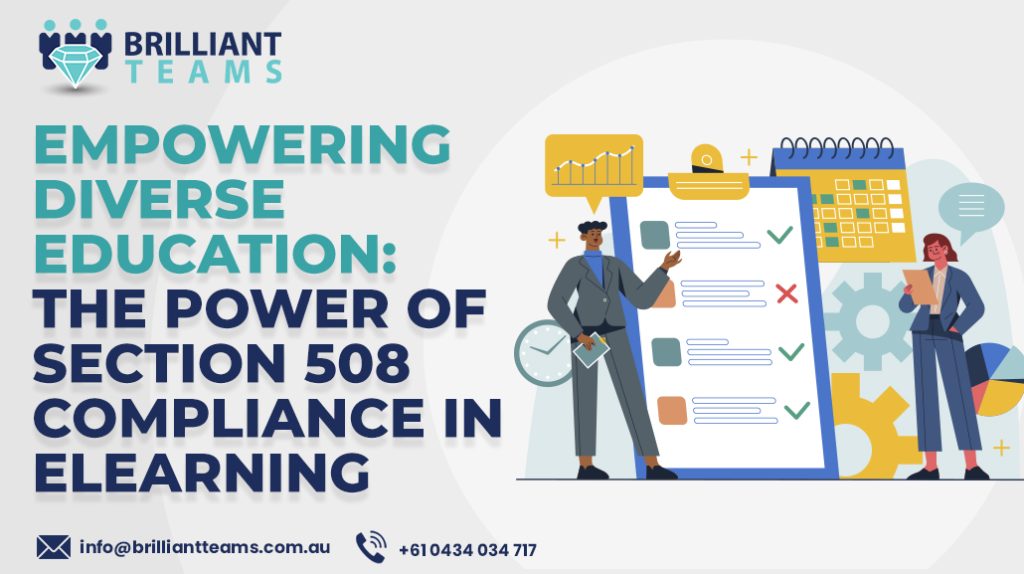
Empowering Diverse Education: The Power of Section 508 Compliance in eLearning – Introduction
Discover the transformative impact of Section 508 compliance in eLearning. Explore how universal accessibility empowers diverse education, enhances learning experiences, and accommodates different learning styles. Learn how to implement Section 508 standards and unlock a future of inclusive online education.
In the rapidly evolving landscape of education, online learning has taken centre stage, revolutionising the way we acquire knowledge. As eLearning becomes more prevalent, the need for inclusivity becomes paramount. This is where the significance of Section 508 compliance in eLearning shines through.
In this comprehensive blog, we delve into the world of Section 508 compliance in eLearning, exploring its role in fostering an accessible and empowering educational experience.
1. Understanding Section 508 Compliance
Section 508 refers to a pivotal amendment to the Rehabilitation Act of 1973. This amendment mandates that federal agencies and institutions receiving federal funding must ensure that their electronic and information technology is accessible to individuals with disabilities. While initially directed at the federal sector, the principles of Section 508 have had a far-reaching impact, particularly within the realm of eLearning.
2. The Power of Inclusive eLearning
2.1 Universal Accessibility
At its core, Section 508 compliance strives for universal accessibility in eLearning. This involves creating eLearning content that can be readily accessed and comprehended by learners with diverse disabilities. By adhering to Section 508 standards, eLearning platforms pave the way for an all-inclusive educational environment, ensuring that no learner is left behind.
2.2 Elevating the Learning Experience
Section 508 compliance not only fulfills legal obligations but also enhances the overall eLearning experience. Designing content that is compatible with assistive technologies—such as screen readers, voice commands, and braille displays—ensures that learners with disabilities can engage with the material effectively. Simultaneously, these adaptations improve the experience for all learners, promoting ease of navigation and engagement.
2.3 Addressing Varied Learning Styles
Diverse learners possess different learning styles, preferences, and needs. Section 508 compliance emphasises content diversity and flexibility, urging content creators to offer information through multiple mediums. This approach accommodates various learning styles, ensuring that learners can grasp concepts in ways that align with their strengths.

No comments yet